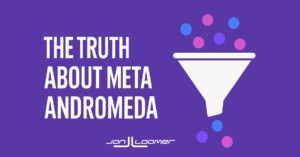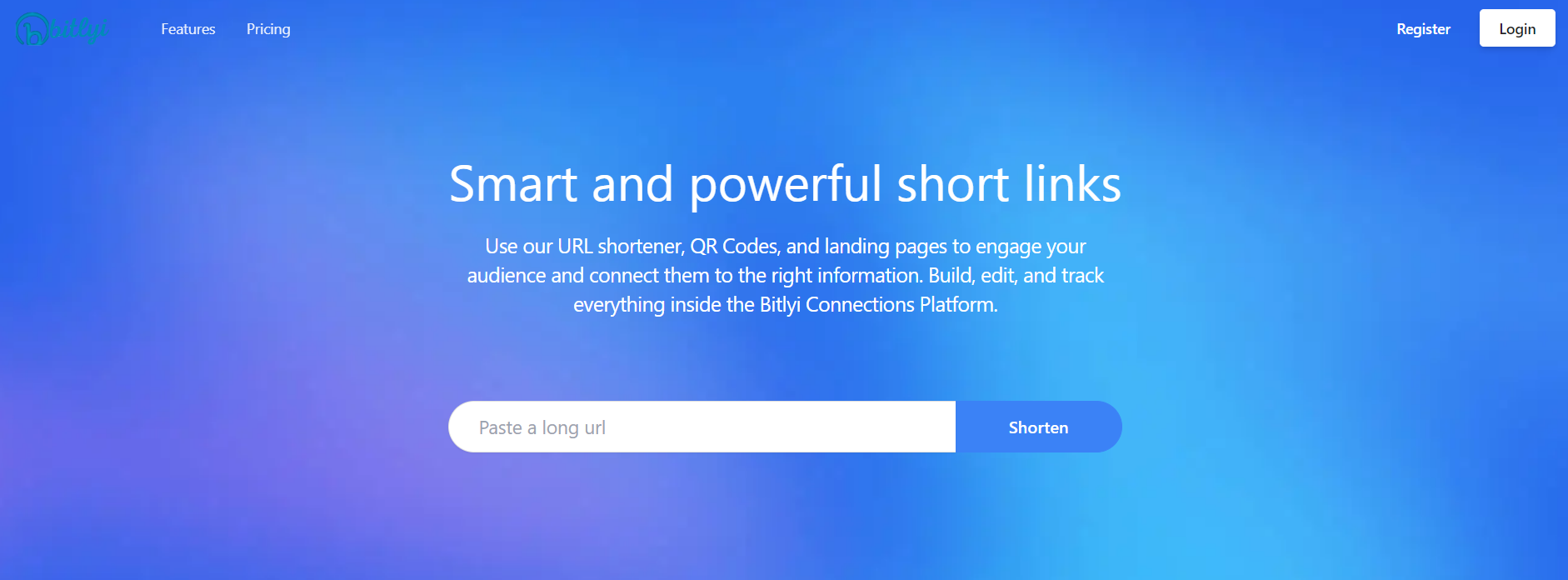
No one would be talking about Andromeda if it didn’t have a fancy name. If you take anything from this article, it’s that.
Meta Andromeda is such a hot topic that we have entered conspiracy theory territory. Every advertiser seems to be talking about it, while few understand what it actually means. The result is that it’s easy for a few loud and opportunistic voices to take advantage of the situation.
So-called “ad systems” promising to harness Andromeda (for a price, of course) have emerged. “Andromeda killed my results” posts are dominating social media. And there are claims that Andromeda alters targeting (“it makes algorithmic targeting worse!”) and causes other collateral damage.
Yikes. There’s a lot of nonsense out there right now. And I hope I can help clear it up.
When it comes to Meta advertising, there are always layers of black-and-white (what Meta says about how something works) and grays (what isn’t known for sure). Let’s focus on what we know about Andromeda and how it impacts you.
I need you to understand two things:
- Andromeda is responsible for ad retrieval, and nothing more
- Andromeda is about capabilities, not new requirements
Let me explain…
What Andromeda Is
Most of the confusion around Andromeda could be prevented if people simply knew what it was. But Meta’s documentation is incredibly dense, which doesn’t help matters. The result is that advertisers formulate their own meanings.
Meta Andromeda is responsible for ad retrieval.
That’s the simplest way of putting it. There are many millions of ads available in the potential pool for a single impression. Andromeda narrows the ad candidates down to a few thousand.
That’s it. Andromeda is ad retrieval. It’s faster and more powerful than the old system, but that’s simply what Andromeda does. Nothing more.
This upgrade of hardware and software was required because of how advertising has changed during the past few years. Thanks primarily to Advantage+ Creative and other enhancements, there are now thousands of potential variations for a single ad. Meta’s old systems couldn’t handle that scale.
What Andromeda Is NOT
Meta Andromeda is only responsible for the first phase, which is ad retrieval. It narrows down the potential pool of ads that could be shown to a few thousand. But it’s not responsible for ranking or delivery.
Because it’s technical and misunderstood, I’ve seen too many advertisers describe Andromeda as “the new algorithm,” or believe that it’s responsible for targeting. Advertisers are changing their targeting inputs in response to Andromeda.
This gives Andromeda far too much credit. Its responsibilities are actually quite boring. But it has a fancy name and an easily confused technical definition, so it’s an easy target.
Andromeda Didn’t Kill Your Results
Most advertisers see Meta Andromeda as the bogeyman. They use it as the overarching reason for their drop in performance. But they only do this because they don’t understand what’s happening and there’s something they can name to give the blame.
When you understand that Andromeda is merely the ad retrieval layer of a multi-step process, you realize how ridiculous some of these claims are. But since results tanked this year and they know Andromeda became a thing this year, it has to be Andromeda that killed their results.
You know. Correlation vs. causation.
That doesn’t mean that Meta is perfect. But there are countless explanations for bad performance at any given moment. Blaming performance on ad retrieval is an odd choice, but I’m convinced this only happens because it has a fancy name.
If Meta Andromeda were simply labeled “The Ad Retrieval Layer,” I’m convinced we wouldn’t hear a word about this. No one would care.
Creative Diversification Confusion
Because Meta Andromeda is so much faster and more powerful than the old model, it’s much better equipped to handle a diverse set of creative. This is why Meta often connects Meta Andromeda to a strategy of creative diversification in their documentation.
That means potentially more formats (static image, video, and carousel), more technical specifications (15 second or 60 second video), more aspect ratios (9×16, 4×5, 1×1), text angles, and customer personas to sift through. The old system couldn’t manage it all efficiently, but Meta Andromeda can.
Andromeda and creative diversification open the rulebook for more possibilities, but it doesn’t require a certain approach. And that’s where most advertisers get confused.
One of the first things many of us did when we heard about Andromeda was start breaking every old rule of ad creation (I did!). Meta eliminated the 6-ad limit recommendation, so we tried 10, 20, or 50 ads in an ad set. We combined different stages of the funnel and different customer personas. And we created as many visually different versions of our ads as possible, all in the name of testing Andromeda’s supposed “rules.”
I’ve seen too many posts from frustrated advertisers “following the rules of Andromeda,” creating endless ads, and wondering why the results don’t follow.
Andromeda is more about capabilities than it is about requirements. Meta can handle more variations, but it doesn’t mean that you’re required to create more to get better results.
Old Ads Can Still Work
The biggest mistake I’m seeing advertisers make is they assume there’s some new structure they must use to “make Andromeda happy.” So they’ll scrap everything they were doing to satisfy Andromeda — or what they think Andromeda wants.
But your old ads can still work. Even if they are only static image with one primary text and headline option. Even if you didn’t accept any Advantage+ Creative or AI-generation enhancements. And even if you only created one ad without considering different customer personas and pain points.
Quality still beats quantity. And because there’s no inherent advantage to creating more ads or more creative assets if they aren’t the right ones, there’s no reason to be overwhelmed by this.
I’ve seen examples of ads that started running pre-Andromeda (well over a year ago) and are still effective today. Your old ads can still work.
How Andromeda Impacts You Now
Andromeda is all about capabilities, not new requirements. I hope that’s your takeaway.
Because of Andromeda, Meta is much better equipped to handle countless variations of ad assets. This is necessary because advertisers can generate so many versions thanks to text options, AI-generated creative, related media, and other enhancements. A powerful system is needed for that.
So if you wanted to stretch Meta to its limits by testing new things, you can. But you’ll be stretching yourself as well. You can create five, 10, or 50 ads if you want. You can select every possible enhancement. You can lean into all of the different formats. You can combine different stages of the funnel or different customer personas into a single ad set.
But it doesn’t mean that you should.
There’s a point where the extra effort delivers no meaningful performance gain. And it’s entirely possible that too many ads and options could hurt performance if those variations don’t align with budget.
I was like everyone else early on, and I tested 25 and 50 ads per ad set. I didn’t see any clear advantage to it. So I’m instead focused on creative diversity at a smaller scale.
When you create ads, prioritize these things:
- Multiple formats
- Multiple text options
- Advantage+ Creative enhancements
- Other eligible creative variations (related media, AI-generated versions)
But you can do all of this with a single ad, and that’s what I’m doing now. I prioritize creative diversification while mostly creating the same number of ads I did before. I am more intentional about using some of the tools (like Flexible Format) to help diversify the assets of the ads I do create.
If you have a huge budget and plenty of resources, your possibilities open up. You can create ad sets with more ads and variations. And the system should handle it better now than it would have in years past.
But you don’t need to. And if you don’t knock yourself out with ad variations, you can still get results.
Resources
Meta Andromeda started as a mystery to me, like it did for everyone else, so my content on the topic has evolved as I’ve tested and learned along the way. But here’s a sampling of some of the blog posts, videos, and podcast episodes I’ve published on the topic if you want to dig deeper:
- Meta Andromeda: What It Means for Your Ad Strategy
- Meta Andromeda and Creative Diversification: 7 Examples Explained
- Why is Creative Diversification Important?
- What Creative Diversification Actually Means
- Flexible Format and Creative Diversification
- 3 Easy Ways to Generate Diverse Creative
- Creative Diversification Is the New Targeting
And here are the three primary official articles from Meta on the topic:
- Meta Andromeda: Supercharging Advantage+ automation with the next-gen personalized ads retrieval engine
- AI Innovations in Meta’s Ad Ranking Driving Advertiser Performance
- The Creative Advantage: Unlocking the Power of Diversification with Meta Andromeda
Your Turn
What has your experience been with Meta Andromeda and creative diversification?
Let me know in the comments below!
The post The Truth About Meta Andromeda and Ad Retrieval appeared first on Jon Loomer Digital.






